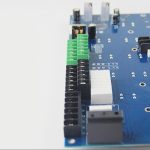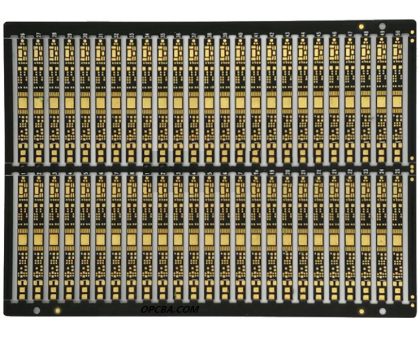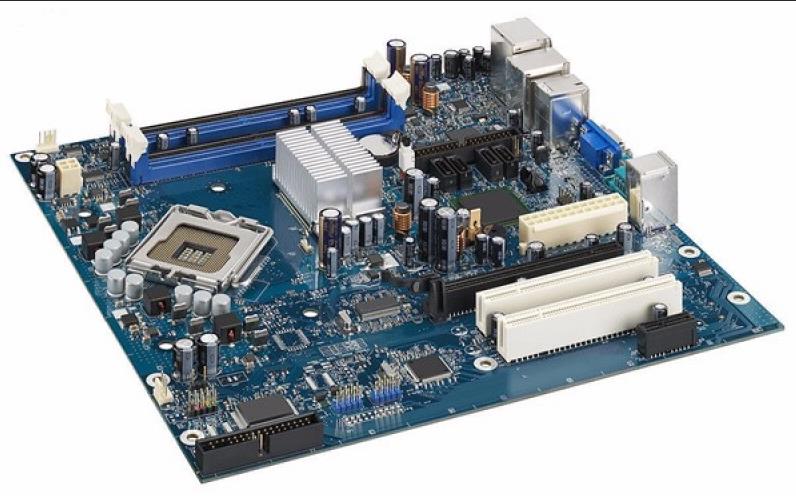Detailed explanation of reflow soldering and wave soldering in SMT chip
Reflow soldering in SMT patch
Reflow soldering is a welding method in which components are installed on solder joints (or in paste form) of circuit boards or prefabricated parts), and solder is melted in the furnace through the furnace to form solder joints. Batch processing furnace (chamber furnace) can load a batch of printed circuit boards at a time. The operator inputs the temperature curve of a given batch of plates into the furnace controller, which changes the heating degree of the spiral according to time. The oven atmosphere is also well controlled, including the use of vacuum. Reflux box type furnace is conducive to small batch production, pilot projects and occasions where furnace temperature distribution and atmosphere must be carefully controlled. The second type of furnace is built into the technical production line PCB with solderless components is continuously fed into the reflow furnace from one end, and the soldered components are discharged from the other end. Therefore, the built-in oven can be part of a common conveyor belt. They receive payments from automatic machines along the conveyor belt without operator intervention. The temperature of each area along the length of the oven and the speed of the conveyor belt determine the temperature curve of reflow soldering.
More areas (usually five to seven) can better control the temperature distribution of the brazing. An inert atmosphere, usually nitrogen (N2), is much cheaper, but easier to maintain than an atmosphere with an oxygen content of 20 parts per million (O2). However, the process of controlling the temperature distribution and atmosphere composition in the furnace is different from that in the chamber reflux. In addition, most of the furnaces built into the production line cannot produce vacuum. However, the built-in furnace is very suitable for mass production and is the most widely used type of electronic installation reflux furnace.
The choice of a reflow furnace – chamber or conveyor belt – is based not only on its throughput, but also on the type of product produced. Complex PCB designs require more control of the temperature profile to ensure that solder joints are produced with minimal scrap. In some cases, the additional furnace area is used to control the cooling rate of the circuit board after reflow soldering to prevent thermal shock to the sensitive element or substrate.
Reflow soldering
The lead-free solder has affected the reflow soldering process. First, it is necessary to develop a suitable temperature curve for the process, which will affect the actual capacity of the equipment to a small extent. Heat sources (infrared, convection, or mixing) can provide a peak temperature for melting lead-free alloys (Tm=217 ° C versus 183 ° C for traditional tin lead solders). Of course, this is due to increased energy consumption and operating costs. The lead-free soldering technology uses two general reflow temperature curves… the soaking reflow temperature curve, which is developed from the traditional Sn Pb (tin lead) eutectic solder curve, but includes temperature rise, and is applicable to lead-free alloys that are more difficult to melt, such as Sn Ag Cu. The exposure step provides activation of the flux and heating of the plates and components. The continuous increase of temperature, or “capping” temperature curve (this is the change of the temperature curve of the first reflux), allows faster heating, thus shortening the residence time of thermal elements and materials in the oven at high temperatures. On the other hand, relatively fast heating of the circuit board will increase the possibility of thermal shock of some components
In optimizing the reflow temperature profile, a balance must be struck between the temperature of solder sufficient to reflow each component (size and shape) and avoiding thermal shock to other components or substrates. Therefore, the high melting point of lead-free solder makes it difficult to develop an optimal temperature curve, which will melt the solder paste under the coarse components without causing thermal shock to small equipment or PCB materials.
Therefore, PCBs with multiple components may require separate welding steps for large components (such as manual or selective welding).
Wave soldering in SMT chip
Wave soldering is used for hybrid technology PCB using SMT patch and through-hole assembly patch. The SMT patch element on the wave soldering side is fixed in place with glue. SMT chip components must be able to withstand the peak temperature thermal shock accompanied by the melting wave. The temperature of the PCB top surface is usually much lower than the solder solidus temperature to prevent the formation of any solder joints. Wave soldering equipment can be integrated into the processing line or operated periodically, because it has similar design in both cases. Built in wave soldering equipment is used for mass production. Small lot systems may include selective welding equipment. The device consists of a turbulent wave soldering nozzle for soldering only selected parts of the printed circuit board, such as through hole connectors, transformers, or switches. The advantage of selective soldering (wave soldering) is that the entire circuit board will not be exposed to high temperatures.
Wave soldering line
An important factor in wave soldering is the support device that secures the circuit board to the conveyor belt. In reflow soldering, the conveyor belt can support the bottom of the PCB in the entire area. However, for this type of soldering, the bottom surface of the circuit board must be in full contact with the soldering wave. Therefore, it is necessary to provide additional devices to prevent warping and sagging of large plates.
Lead-free technology has a significant impact on the performance of wave soldering equipment. It has been found that the same bath temperature (250 to 270 ° C) used for traditional tin lead solders is also applicable to lead-free alloys. Therefore, in the process of equipment operation, cleaning the slag and flux residue after wave soldering will not cause serious problems. The lack of bright fillets when lead-free alloys are used in wave soldering of SMT chip technology has been corrected by adding nickel and germanium, which changes the alloy crystallization process and leads to bright fillets.
Lead free alloys are highly corrosive and can damage equipment components, such as impellers, baffles, and molten pool walls. The new wave soldering equipment solves this problem by using new steel and ceramic coatings.





